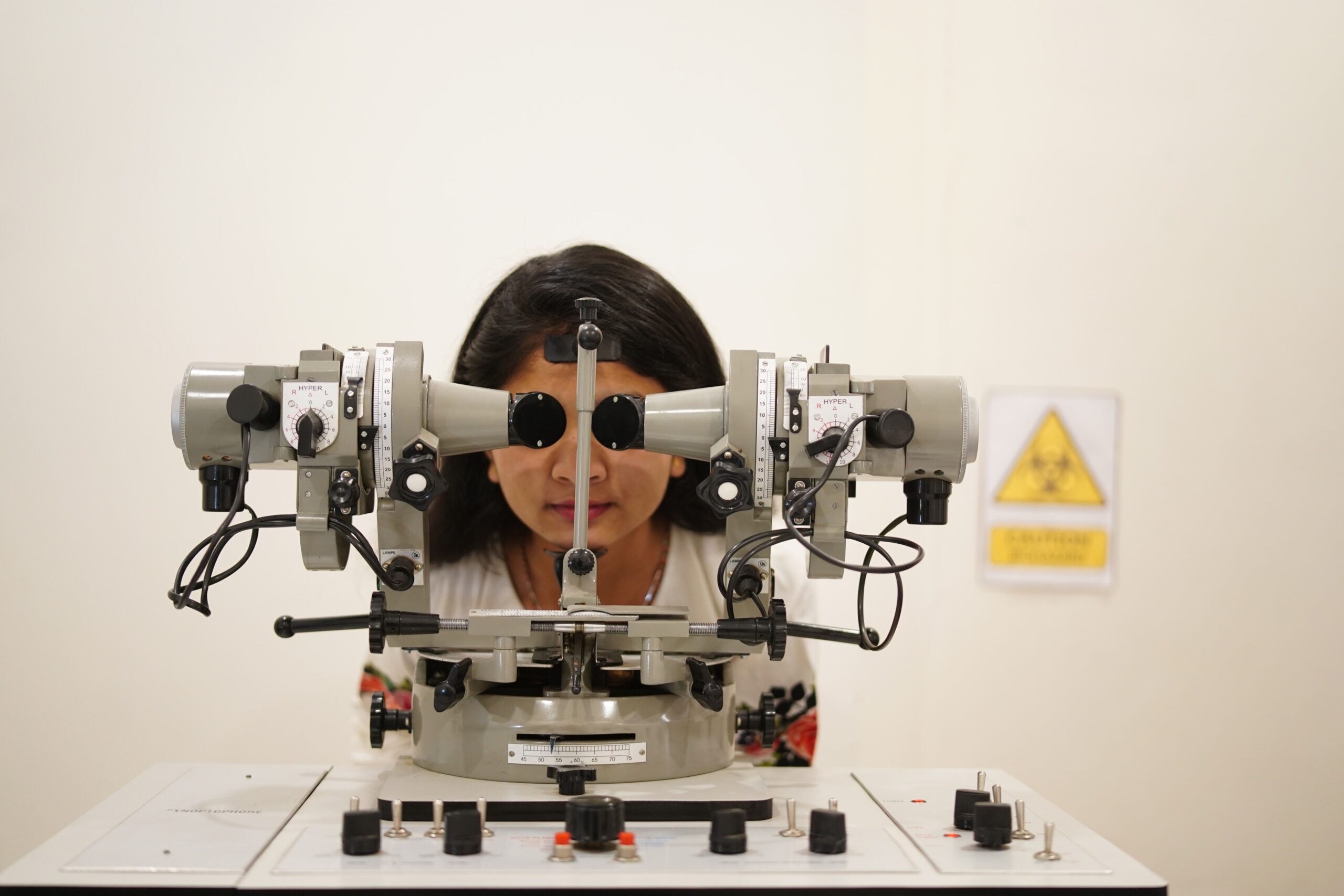The eye that is used less becomes weaker (“lazy”) over time.
The brain ignores signals from the weaker, or “lazy,” eye.
The condition can result in vision impairment and loss of depth perception.
If amblyopia goes untreated, temporary, or permanent loss of vision can occur. This can include loss of both depth perception.
Mostly amblyopia affects one eye, but in certain circumstances, the vision in both the eyes can be affected.
Amblyopia is the most common reason for vision loss in kids, affecting 2% to 4% of children below the age of 15 years.
Signs
Amblyopia may be hard to detect until it becomes severe. Early warning signs include:
- a tendency to bump into objects on one side
- an eye that wanders inward or out
- poor depth perception
- double vision
- squinting
Causes of Amblyopia
- Uncorrected refractive error / spectacle number
- Crossed eye or turning in or out of one eye
- Genetics, or a family history of amblyopia
- Difference in vision between both eyes known as anisometropia
- Damage to one eye from trauma
- Drooping of one eyelid
- Vitamin A deficiency
- Corneal ulcer or scar
- Eye surgery
- Congenital cataract
- Glaucoma, which is high pressure in the eye
Treatment
Treating underlying eye conditions is the most effective way to treat amblyopia.
The earlier the treatment starts, the better the outcome.
- Eyeglasses
- Contact lenses
- Eye patches
- Eye drops
- Vision therapy
- Synaptophore (in clinic eye exercises)
- Software based eye excercises ( such as Bynocs)
DIAGNOSIS AND TESTS
The American Optometric Association recommends that children have eye exams when they are 6 months old and 3 years old. After that, children should receive routine exams every 2 years, or more frequently, from ages 6 to 18.
Your eye doctor will typically perform a standard eye exam to assess vision in both of your eyes. This involves a series of tests.
Goal of treatment
To restore and improve the visual acuity by two strategies
- Present clear retinal images to the amblyopic eye or lazy eye
- Eliminate the cause of visual deprivation
- Correcting visually significant refractive errors
- Make the child use the amblyopic eye to improve stimulation of that eye to the brain



